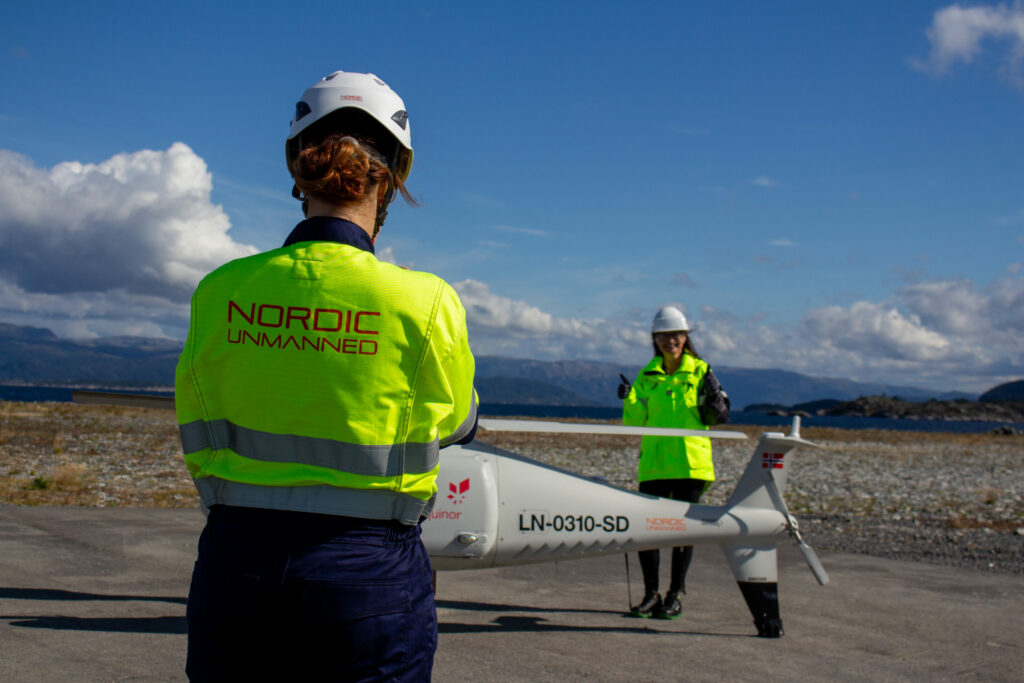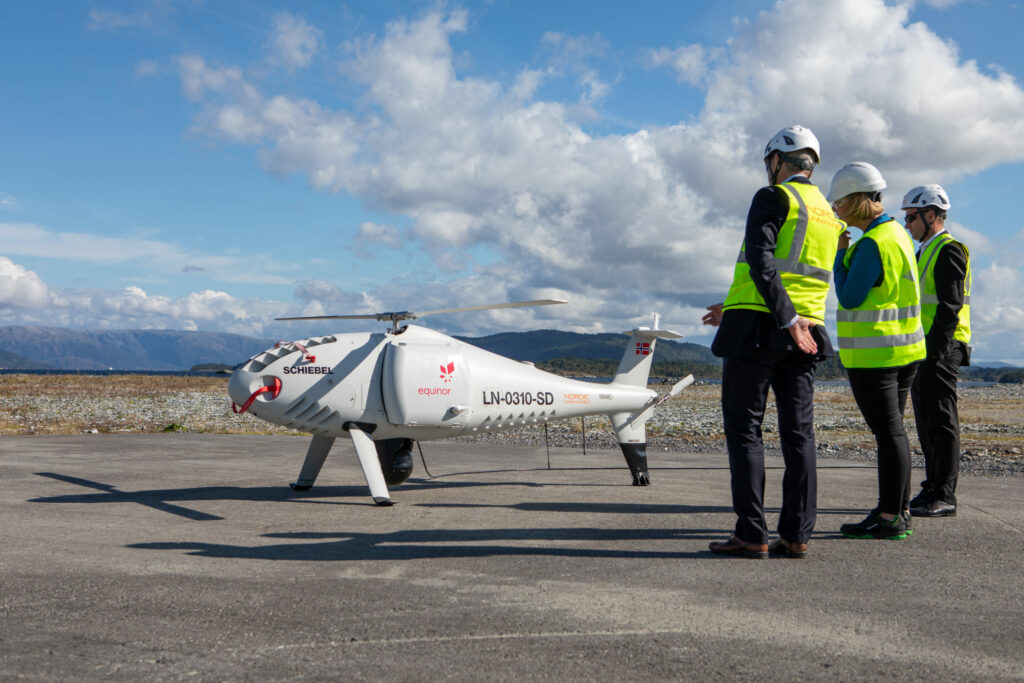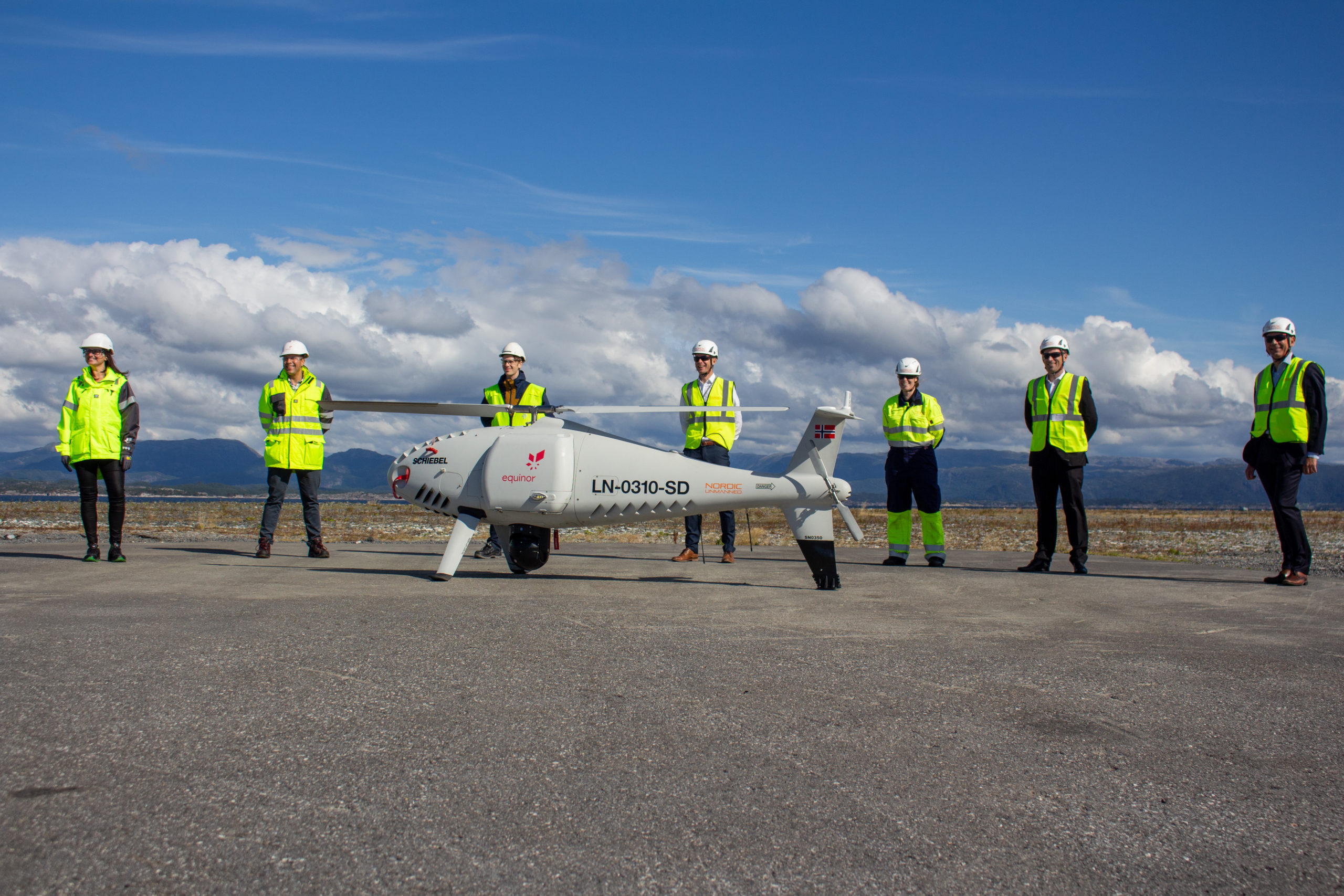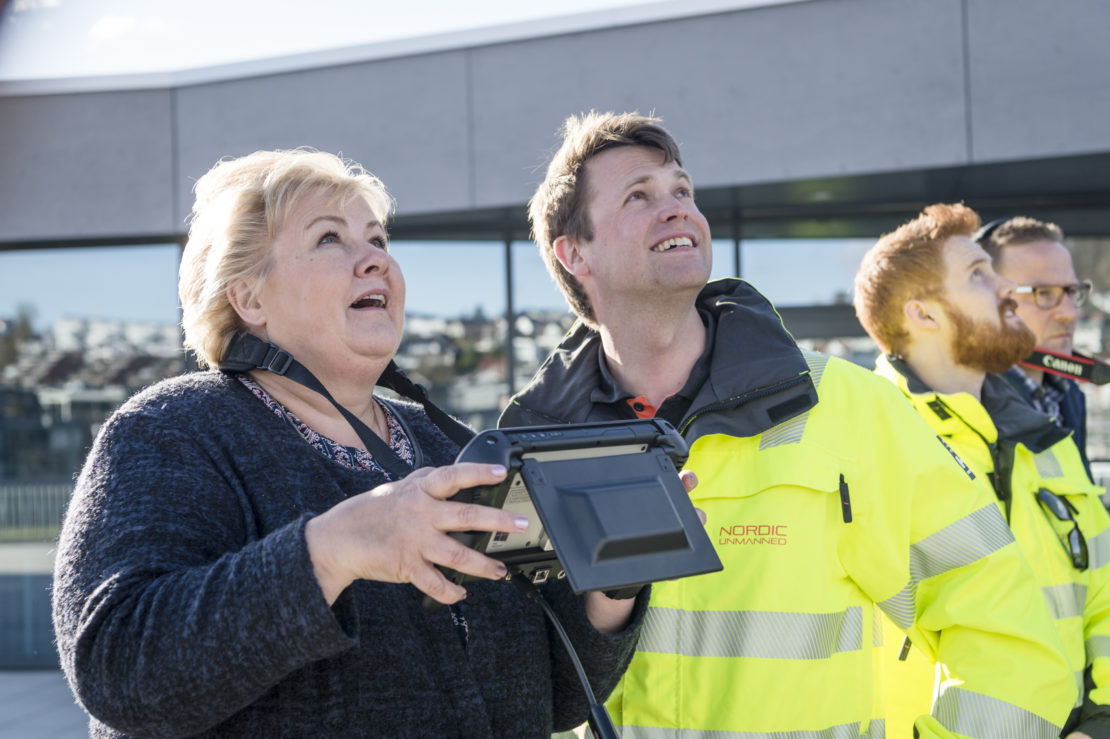In August 2020, Nordic Unmanned and Equinor carried out the first unmanned delivery to Troll A – an offshore oil and gas installation in full production. This flight was a testament to how far the unmanned industry has come – and a teaser for what is still to come.
Turning visions into actions
For many years, there have been talks about how unmanned systems can give benefits in various use cases. By taking responsibility for carrying out this flight, Equinor demonstrates that they are serious about turning bold visions into actions. Equinor is no stranger to pioneering achievements, and they have been driving innovation in energy production on the Norwegian continental shelf for many years. Now, they are positioning themselves as a leader in the adoption of unmanned systems.
Nordic Unmanned is a leading actor in unmanned aviation, and we are eager to partner up with forward looking companies that want to make the future happen. We are excited about creating new jobs in a disruptive global industry that is growing exponentially.
It is appropriate to emphasize that for the foreseeable future, the aim is not to replace all traditional rotorcraft flights – but to compliment the current service offering by improving the overall search and rescue preparedness and time-critical logistics while also reducing risk and cost.
Environmentally friendly solutions
The emissions of the CAMCOPTER® S-100 is about 50 times lower than a traditional S92 helicopter per nautical mile. Each flight that can be carried out with a smaller unmanned helicopter will reduce the environmental impact, and if unmanned systems make up a certain component of the overall service offering on a large scale, that can give actual environmental benefits.
As demonstrated in this first flight, time-critical transport of small components is one typical case where an unmanned helicopter can solve the mission with a lower environmental impact than if a large helicopter.
The logistics industry is a major contributor to pollution. According to reports, the logistics industry is responsible for upwards to 20% of the total global CO2 emissions. Transportation by air, sea, and road are now facing stricter laws and regulations due to their environmental impact. Many companies are working every day to meet increased demand from customers and investors for a greener business.
On a side note, Nordic Unmanned assists EMSA (European Maritime Safety Agency) and national authorities in enforcing the IMO 2020 regulations using unmanned helicopters and sulphur sniffer technology. From 1st of January 2020, all vessels must use fuel with maximum content of 0.5%, compared to the previous limit at 3.5%. This means sailing vessels has to reduce their total sulfur emissions by 85%

Technology for the future
This was a first step, with many more to come. Soon, unmanned systems will operate in ecosystems with vehicles in all domains; on land, at sea, subsea, in the air – and space. They will all be connected and provide novel services and capabilities that is still not invented. Does your company want to watch this happen, or would you like to take an active role and take a leading position?
We would love to leverage our experience to help our customers to take steps towards and tap into the potential of unmanned systems – do not hesitate to reach out!
Read about our own logistics and robotization department here.


